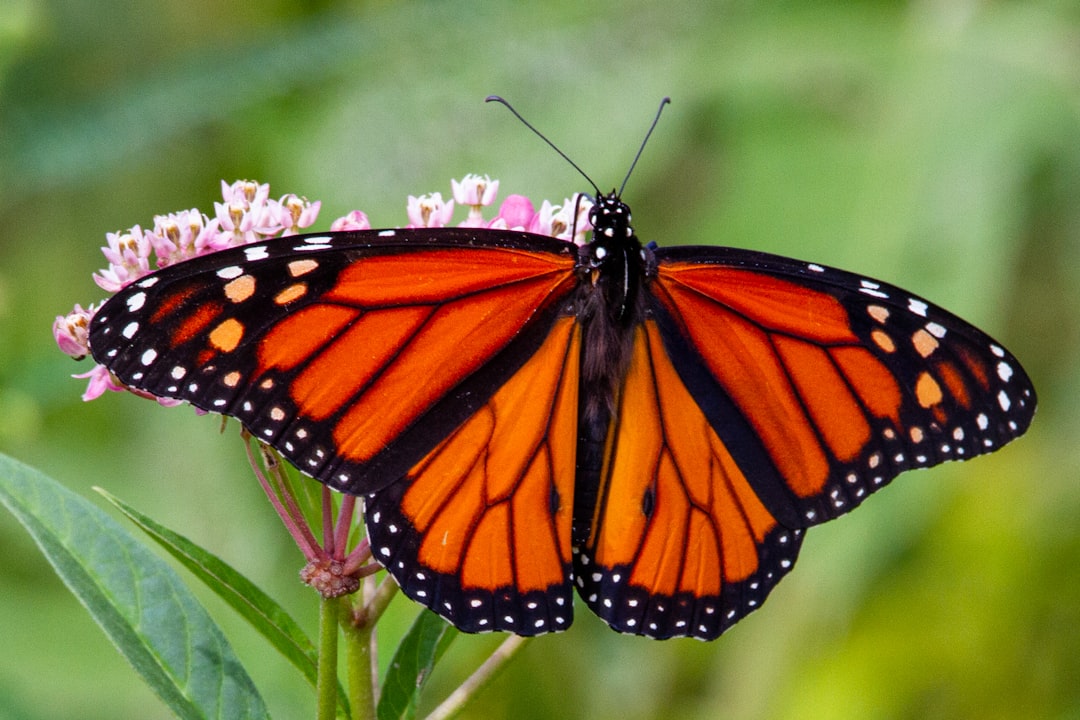
Danaus plexippus (Monarch Butterfly)
The Danaus plexippus, commonly known as the Monarch butterfly, is one of the most recognizable and studied butterflies in the world. This species is famous for its remarkable migratory journey, traveling thousands of kilometers between North America and Central Mexico.
Description
The Monarch butterfly has distinctive orange and black wings, with white spots along the edges. The wingspan ranges from 8.9 to 10.2 cm (3.5 to 4 inches). The upper side of the wings is bright orange with black and white spots, while the underside is a lighter, more muted color, often with greyish or brownish hues. The caterpillars of this species are green with black, white, and yellow stripes.
Habitat and Distribution
Danaus plexippus can be found in North America, particularly in the United States, Mexico, and Canada. During the winter months, large populations of Monarch butterflies migrate to the high-altitude fir forests of central Mexico, where they cluster together in colonies.
Migration
One of the most fascinating aspects of the Monarch butterfly is its annual migration. Monarchs travel up to 4,800 kilometers (3,000 miles) from Canada and the United States to Mexico. This migration is not only one of the longest for any insect but also one of the most well-known in the animal kingdom. Remarkably, the butterflies return to the same forests in Mexico, although the journey is not made by the same individuals—several generations are involved in this migration.
Diet and Life Cycle
The Monarch’s diet consists mainly of nectar from various flowers. The caterpillars feed exclusively on milkweed plants, which provide the necessary nutrients for their development. The life cycle of Danaus plexippus includes four stages: egg, larva (caterpillar), pupa (chrysalis), and adult butterfly. Each stage lasts for different periods, with the pupal stage being the longest.
Conservation Status
While the Monarch butterfly is not currently considered endangered, its population has been declining in recent years. Habitat loss, especially the destruction of milkweed plants due to agricultural practices, and climate change are major threats to this species. Conservation efforts are underway to protect the Monarch’s habitats, especially along its migratory routes.
